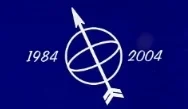Jul92
archive > Log > Log1992
Hong Kong

Dredging techniques

MR C. JAN L. DEJONGH commenced his talk by giving brief details of his company, Dredging International, which apparently is the second largest dredging company in the world having more than 30 dredgers.
Interestingly enough the majority of the dredgers in the world ' of which there are as many as 2,000, are owned by Dutch and Belgian companies. Various types of dredgers exist, including the following:
Hopper dredgers-this type are designed to lift seabed material, store it in the ship hold, transfer it to the reclamation site and then open their bottom to dump the material on the seabed. There are some 400 of these in the world. They are used mainly in the reclamation and capital projects.
The next type of dredger discussed was the cutter section dredger, which works on anchors, and uses a sideways motion of the ship to cut away seabed material. These generally have a long flexible pipeline from the ship to shore. They lift the material into the vessel and then pump it to the landfill ashore through the pipeline. They are generally used for new works, rarely for maintenance.
The third main type of dredger is the bucket dredger. These are the oldest type currently used; no new ones have been built in the Western world for the last 20 years although some have been constructed in China and Russia. These are ideal vessels for maintenance, and very popular amongst dredging engineers as they have a proven track record. They normally discharge into barges brought alongside.
The latest development in dredgers is the deep suction dredger. This can lift material from around 80 meters below the vessel. It is theoretically possible for almost any depth to be reached, with 500 metres already attainable. They can however only lift free running sand, and they are not suitable for other operations. Once again they would normally discharge to barges.
Contributed by Paul Markland, FNI
Seaways July 1992

